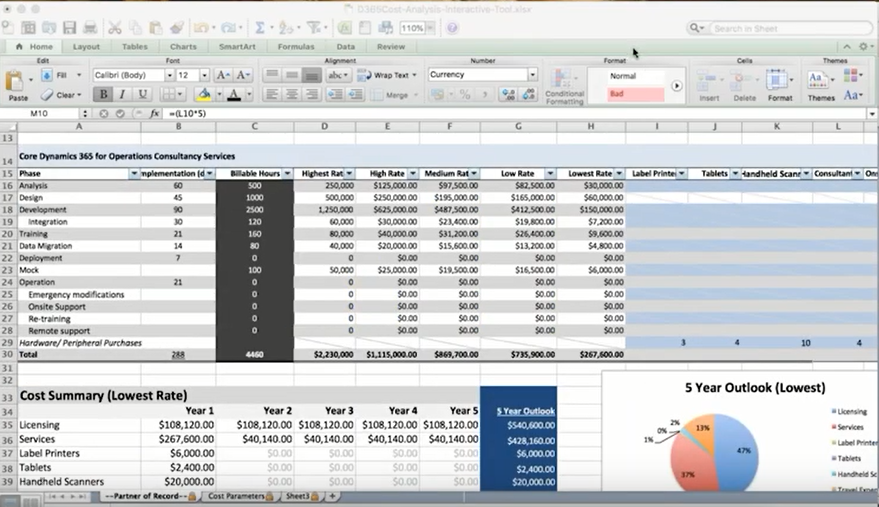December 17, 2019 - by Synoptek
For successful ERP implementation or upgrade, it is critical to have visibility in cost heads at all stages of the project. “Standard” factors such as Licenses and Subscription fee and “Soft” factors such as employees, industry, and process maturity of the enterprise – all of these must be considered for budgeting.
A part of the allocated budget, typically for explicit standard factors, is required at the start of the project while budget dedicated for customization, maintenance, services, and most of the “soft factors” is required in due course. It is, however, important to estimate the budget in totality.
In this blog that is based on cost analysis before D365FO implementation webinar, we will discuss factors that impact ERP project budget at different stages and briefly touch upon the all-encompassing D365FO cost analysis tool.
How Does One Holistically Look at the Cost Factors?
We have learned in our previous blog that soft factors can greatly impact the implementation budget. Therefore, it is important to anticipate the kind of financial or other impact it will have on the overall implementation. Surprisingly, factors that we consider fixed or standard will also vary a great deal if enough thought has not been given during budgeting. For example, if your organization is in the Supply Chain Management sector and all your employees are going to use it for supply chain management, you only need to pay the base price of the supply chain module. Given that Microsoft has moved from a fixed licensing model to a more à la carte licensing structure, there is a scope for organizations to choose only what they need. So, now there is no point paying for everything or for any additional modules if you are not going to use them.
When it comes to fixed cost heads – another cost head that must be carefully planned is the services cost. Services cost if not planned properly can have a huge, unnecessary burden on the overall implementation cost. In order to keep the services fee within limits, it is a good idea to freeze in the requirements internally before roping in a consultant for the project. The requirements should be divided into must-have requirements and good-to-have requirements, so that while preparing the costing sheet, the planner knows what can be removed, if required.

Cost analysis sheet for D365FO implementation
Apart from the standard costs, there are going to be soft factors that influence the different stages of implementation and hardware requirements that inevitably arise during the project. To plan for such variable factors in advance helps in making planning as accurate as possible – and prevents unpleasant surprises later.

Cost analysis sheet for D365FO implementation
A Tool that Helps Estimate the Cost of Implementing D365FO
The cost of implementation can move way beyond the optimum pricing if planning doesn’t consider the fact that each cost head has a variable component attached to it. Dynamics expert has developed a cost analysis sheet (which is available on request) using which organizations, while planning for D365FO implementation, can take into account the new à la carte licensing structure of Microsoft as well as the standard factors as well as soft factors (to a great degree) that influence the overall implementation cost. The cost sheet also helps look at the 5-years projections.
To watch the complete webinar, please click here. Also, write to us if you would like us to share the D365FO cost analysis tool with you.